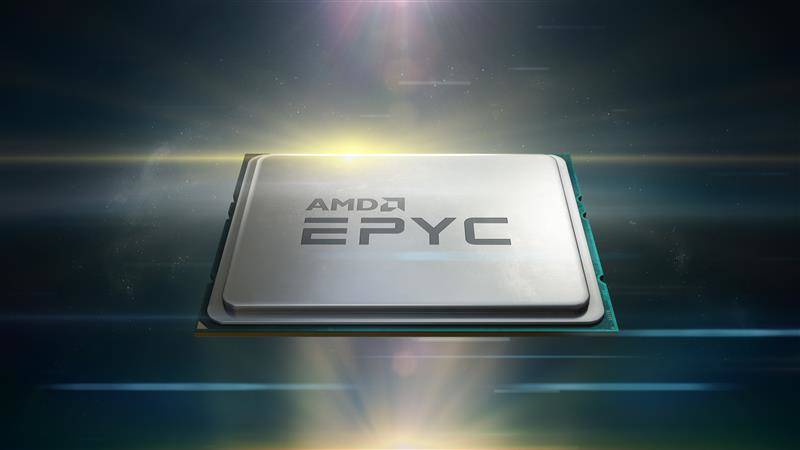Epyc 3 Ain't Done Yet – AMD Extends Availability To 2026, Unleashes Six More SKUs

Nearly a year after launching 4th-gen Epycs, AMD still isn't ready to retire the 3rd-Gen processor family, confirming it is now extending availability of the line through 2026 and revealing six new-ish SKUs.
"We have seen a clear opportunity to give our customers more options that bring the leadership performance and efficiency of Epyc to less technically demanding but still business critical workloads," Dan McNamara, SVP of AMD's server business, explained in a canned statement.
The news comes more than two and a half years after AMD launched its Epyc 3 Milan processor family, with support for up to 64 cores, 256MB, 128 PCIe 4.0 lanes, and eight channels of DDR4 3200MTps memory. The chip shop later released a cache optimized version of the chip – codenamed Milan-X – which boosted the maximum L3 cache to 768MB to support HPC and other bandwidth sensitive workloads.
However, the six chips announced today appear to be optimized for price rather than performance. Four of them are eight- and 16-core parts with price tags ranging from $338 to $604. Compared to the eight- and 16-core parts available at launch, these chips are clocked a fair bit lower, with boost clocks of 3.4GHz. The slower operating frequencies do come at the advantage of lower power consumption, which comes in at 120–130W, depending on the SKU.
For those who need higher core counts, AMD has also introduced single socket versions of its existing 48- and 56-core chips, priced at $2,722 and $3,139 respectively.
Here's a full rundown of the Epycs announced today:
- Epyc 7203: 8 cores/16 threads, with a base clock of 2.8GHz and a boost clock of 3.4GHz, and TDP of 120W – $348
- Epyc 7203P: 8 cores/16 threads, with a base clock of 2.8GHz and a boost clock of 3.4GHz, and TDP of 120W – $338
- Epyc 7303: 16 cores/32 threads, with a base clock of 2.4GHz and a boost clock of 3.4GHz, and TDP of 130W – $604
- Epyc 7303P: 16 cores/32 threads, with a base clock of 2.4GHz and a boost clock of 3.4GHz, and TDP of 130W – $594
- Epyc 7643P: 48 cores/96 threads, with a base clock of 2.3GHz and a boost clock of 3.6GHz, and TDP of 225W – $2,722
- Epyc 7663P: 56 cores/112 threads, with a base clock of 2.0GHz and a boost clock of 3.5GHz, and TDP of 240W – $3,139
Despite their three-year-old Zen 3 cores, AMD claims its chips are still competitive with Intel's latest Sapphire Rapids Xeons on both price and performance. Looking at its eight-core parts, AMD claims up to 14 percent lower system price and as much as 62 percent higher performance in the SPECrate2017_Int_base benchmark compared to Intel's Xeon 3408U. But as with all vendor-supplied benchmarks, we recommend taking AMD's claims with a grain of salt.
While the chips may be based on an older architecture, Epyc 3 does offer a couple of benefits for price-conscious buyers – including support for older, slower, but often less expensive DDR4 memory.
- AMD gives 7000-series Threadrippers a frequency bump with Epyc core counts
- Nvidia's accelerated cadence spells trouble for AMD and Intel's AI aspirations
- Intel's Gelsinger grades his chip flip a hit, but AMD exec thinks it's more silicon slip
- AMD graphics card users report gremlins with Windows 11
With the shift to AMD's Zen 4 cores this generation, kitting out a system meant opting for faster, albeit pricier, DDR5 memory. What's more, at launch Epyc 4 was limited to one DIMM per channel across its 12 channels.
Of course, AMD's 4th-Gen Epyc family is designed to address a much wider array of use cases. In addition to the 96-core processors announced last November, AMD has since launched a 128-core chip aimed at cloud providers and a cache-stacked X-chip with up to 1.1GB of L3 cache for those running bandwidth constrained HPC workloads. The final entrant to AMD's Epyc 4 family was unveiled in September with the launch of its edge-optimized Siena parts, which boast anywhere from eight to 64 Zen 4 cores in a smaller form factor. ®
From Chip War To Cloud War: The Next Frontier In Global Tech Competition
The global chip war, characterized by intense competition among nations and corporations for supremacy in semiconductor ... Read more
The High Stakes Of Tech Regulation: Security Risks And Market Dynamics
The influence of tech giants in the global economy continues to grow, raising crucial questions about how to balance sec... Read more
The Tyranny Of Instagram Interiors: Why It's Time To Break Free From Algorithm-Driven Aesthetics
Instagram has become a dominant force in shaping interior design trends, offering a seemingly endless stream of inspirat... Read more
The Data Crunch In AI: Strategies For Sustainability
Exploring solutions to the imminent exhaustion of internet data for AI training.As the artificial intelligence (AI) indu... Read more
Google Abandons Four-Year Effort To Remove Cookies From Chrome Browser
After four years of dedicated effort, Google has decided to abandon its plan to remove third-party cookies from its Chro... Read more
LinkedIn Embraces AI And Gamification To Drive User Engagement And Revenue
In an effort to tackle slowing revenue growth and enhance user engagement, LinkedIn is turning to artificial intelligenc... Read more

